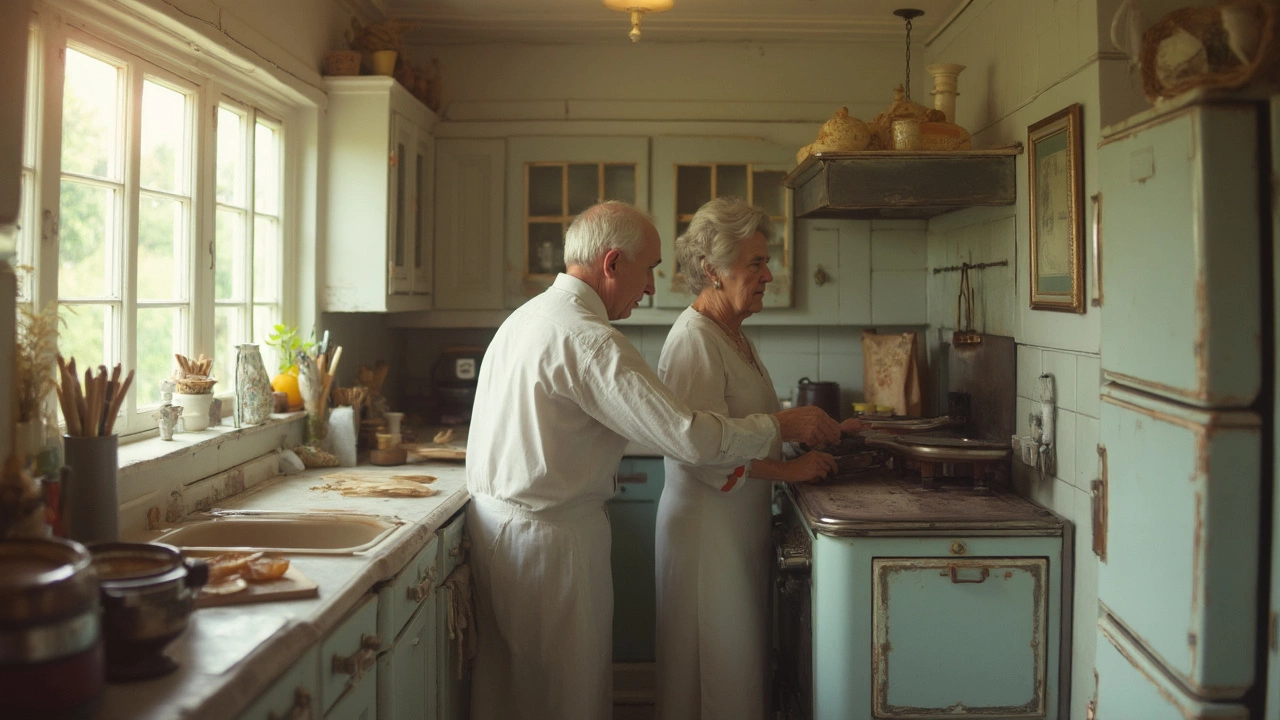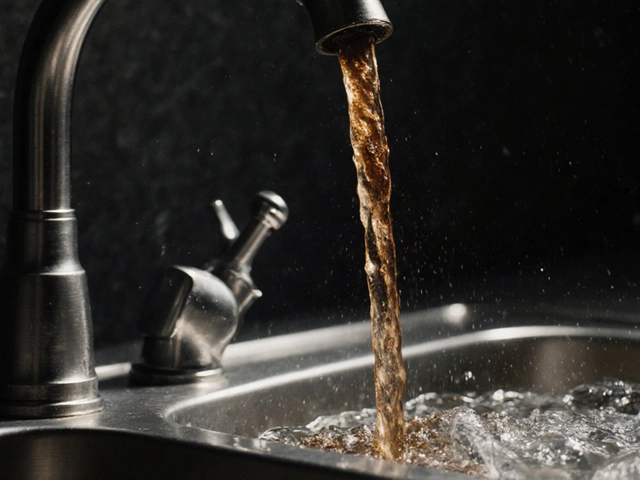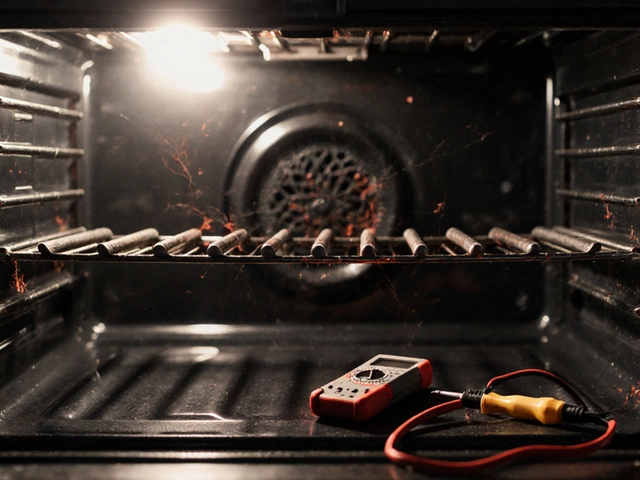If you've got a stove that's hit the decade mark, you might be wondering what to do next. Is it worth sinking cash into repairs, or is it time to bite the bullet and buy a new one?
Let’s keep it real: ten years is often seen as the turning point for large appliances like stoves. They're built to be durable, but like an old car, issues can sneak up on you as they age. And those issues? They often come with a hefty bill.
But don't throw in the towel just yet. Get familiar with a few numbers first. Repair costs versus the price of a new stove—knowing these can make your choice a lot easier. Repairs that hit more than half the price of a new appliance usually scream, "Time to upgrade!" But, if it's just a burner out or the oven won't heat, a simple fix might do the trick.
- Understanding Appliance Lifespan
- Evaluating Repair Costs Versus Replacement
- DIY Troubleshooting Tips
- Warning Signs It's Time for a New Stove
- Maximizing Your Stove's Lifespan
Understanding Appliance Lifespan
First off, let's get a sense of what the average lifespan is for a stove. Typically, a well-maintained electric oven or stove tends to last about 13-15 years. But this isn’t a hard and fast rule. A lot depends on how you’ve treated it over the years.
Wondering why some stoves seem immortal and others die young? Consistent maintenance is a huge factor. Things like cleaning the burners regularly and ensuring the door seal is tight can add years to your stove.
Factors Affecting Lifespan
Okay, so what impacts that lifespan? Here are some usual suspects:
- Usage Frequency: Using your stove more often naturally leads to more wear and tear.
- Brand and Model: Some brands have a rep for lasting longer. It's wise to look into consumer reports and reliability studies when buying.
- Quality of Parts: Original parts typically perform better. Opting for cheap or poorly made replacements? That’s a shortcut to trouble.
Signs Your Stove is Aging
Now, how can you tell if your stove’s on its last legs? Watch out for signs like uneven cooking, faulty burners, or those annoying sparks when you switch it on. Sometimes, it’s just time to call it a day.
Should You Repair or Replace?
Here's where the rubber meets the road. With a 10-year-old stove that's seen some better days, weigh the likelihood of future repairs against the investment in a shiny new model. Consider energy efficiency too. Newer models could save you money in the long run on your electric bill.
Evaluating Repair Costs Versus Replacement
Okay, so you've got a stove repair dilemma. It’s old, might be acting up, and you're caught between repairing it or ditching it for something shiny and new.
First off, let's talk numbers. It's crucial to compare the cost of repairs with the price of a new stove. A good rule of thumb? If repairs reach 50% or more of what a replacement would cost, it might be smarter to just get a new stove. Sounds simple, right? But it really depends on the specifics.
Breaking Down Costs
Consider typical repair costs: fixing a burner might set you back $150, while more serious issues like a faulty heating element could be $200 or more. Meanwhile, basic stoves start around $500. So a couple of small fixes? They might be worth doing.
Hidden Costs to Keep in Mind
Remember, it's not just about the repair bill. Factor in the time, hassle, and potential downtime without a working stove. Are you okay with patching it up, knowing more issues could crop up soon? Or would you prefer the confidence of a new purchase, warranty and all?
Looking at the Bigger Picture
Of course, there are other things too. What's the energy efficiency like? Newer models often come with better energy ratings, which could mean lower bills. And what about tech features? Enhanced safety and smart options are things you might want to consider.
| Repair | Cost Range | Benefit |
|---|---|---|
| Burner Fix | $150 | Quick Solution |
| Heating Element | $200+ | Restores Oven Functionality |
| New Stove | $500+ | Warranty, Efficiency |
In some cases, dishing out for a new unit could actually save you more in the long run. But hey, if the old unit still works decently well, a quick DIY fix might be all it needs for now. Weigh the pros and cons, and make the call that fits you best.

DIY Troubleshooting Tips
Tinkering with an older stove can feel like trying to solve a puzzle. But don’t worry—I've got a handful of tips that could save you a technician visit.
Burner Issues
If you've got a burner that’s acting up, first check for any visible damage. Is the burner coil broken or burned through? A swap out with a new part can often do the trick.
- Turn off the stove and unplug it for safety.
- Remove the burner by lifting it up and out.
- Inspect the coil for any visible damage.
- If found, replace it with a new coil by fitting it back into the socket.
Oven Not Heating
This is a common problem with older ovens. First thing you should check? The heating element.
- Ensure the oven is off and cool.
- Look for any visible signs of wear or breakage on the heating element.
- Use a multimeter to test for continuity. If there's none, it's time for a replacement.
One seasoned appliance technician said,
"Replacing a heating element is like changing a light bulb—simple once you know the steps."
It's worth noting that sometimes issues can be less about physical parts and more about the controls or the settings you've used. Be sure your oven is set to the right function and temperature!
Electrical Connections
Your electric oven repair adventure isn't complete without a peek at electrical connections. Loose connections can cause intermittent problems.
- Unplug your stove to stay safe.
- Open the back panel and carefully check connections, looking for disconnections or burns.
- Tighten loose wires and replace any that appear frayed.
Remember, a little know-how goes a long way in appliance maintenance. Give these DIY tips a try before calling in the pros. It'll keep your stove running longer without a big hit to your wallet.
Warning Signs It's Time for a New Stove
Knowing when to call it quits on your 10-year-old appliance can save you a lot of hassle and money down the road. Let's look at some key warning signs that it's time to upgrade.
Consistent Performance Issues
Does your stove take forever to heat up or keeps running cold? That's a pretty clear sign something's not working right. Sure, a quick fix might patch things up, but if these issues keep popping up, it’s probably time to consider a new stove.
Costly Repairs
If your electric oven repair guy starts becoming a regular visitor, weighing those repair costs against the price of a new appliance is smart. Repair bills getting close to 50% of a new stove's cost? That’s usually your cue to stop throwing good money after bad.
Old Technology
Tech has come a long way. A 10-year-old stove likely lacks energy-efficient features that could save you money on your energy bill. Not to mention, smart appliances now sync with phones, making life a bit easier.
Strange Noises and Smells
Unusual clunks, buzzing, or any burning smell isn't just annoying. They’re potential indicators of electrical issues, which can be dangerous. No need to risk a fire hazard—better safe than sorry.
Rising Energy Bills
If your electricity bill starts climbing faster than your thermostat in the summer, your appliance could be drawing more power than it should. Old stoves get less efficient over time, meaning you're likely paying more for less cooking power.
Running through this checklist can give you a clearer picture of whether it's time to hang up the apron and bring in a newer model. Remember, safety and efficiency matter, and staying ahead of potential problems is always a smart move.

Maximizing Your Stove's Lifespan
Making your stove last isn’t as tough as you might think. With a few regular maintenance tricks, you can get more life out of your trusty appliance. It's all about being proactive and taking care of those little quirks before they turn into big problems.
Regular Cleaning
First up, keep your stove clean. Spills happen, but they shouldn't stick around. Regularly wipe down the surface, burners, and knobs. Sticky residue can ruin burner efficiency, not to mention being a major fire hazard.
Inspect and Replace Worn Parts
Give your electric oven repair a solid start with routine inspections. Check for worn-out or damaged parts like burners, heating elements, and electrical connections. If something looks off, tackle it quickly. Better to swap out a single burner than face a major malfunction later.
Avoid Overloading Your Stovetop
Overloading can lead to damage or even dangerous situations. Stick to using appropriately sized cookware for each burner—it makes a difference in heat distribution and overall stove health.
DIY Fixes and When to Call a Pro
If you’re into DIY, some DIY fixes can be done with basic tools. Resetting the circuit breaker when a burner goes out or unclogging a gas burner jet can often be DIY tasks. But if you’re unsure, don’t hesitate to contact a professional for stove repair.
Energy Efficiency Tips
Keeping energy efficiency in mind not only helps your stove but might also save some bucks on the energy bill. Opt for flat bottomed pots and match pot size to burner sizes for optimal cooking.
By keeping these tips in mind, your stove's ten years might just be the beginning. With care, these mighty appliances can serve your family meals for many more years to come. And who knows, maybe even help you master that soufflé!





